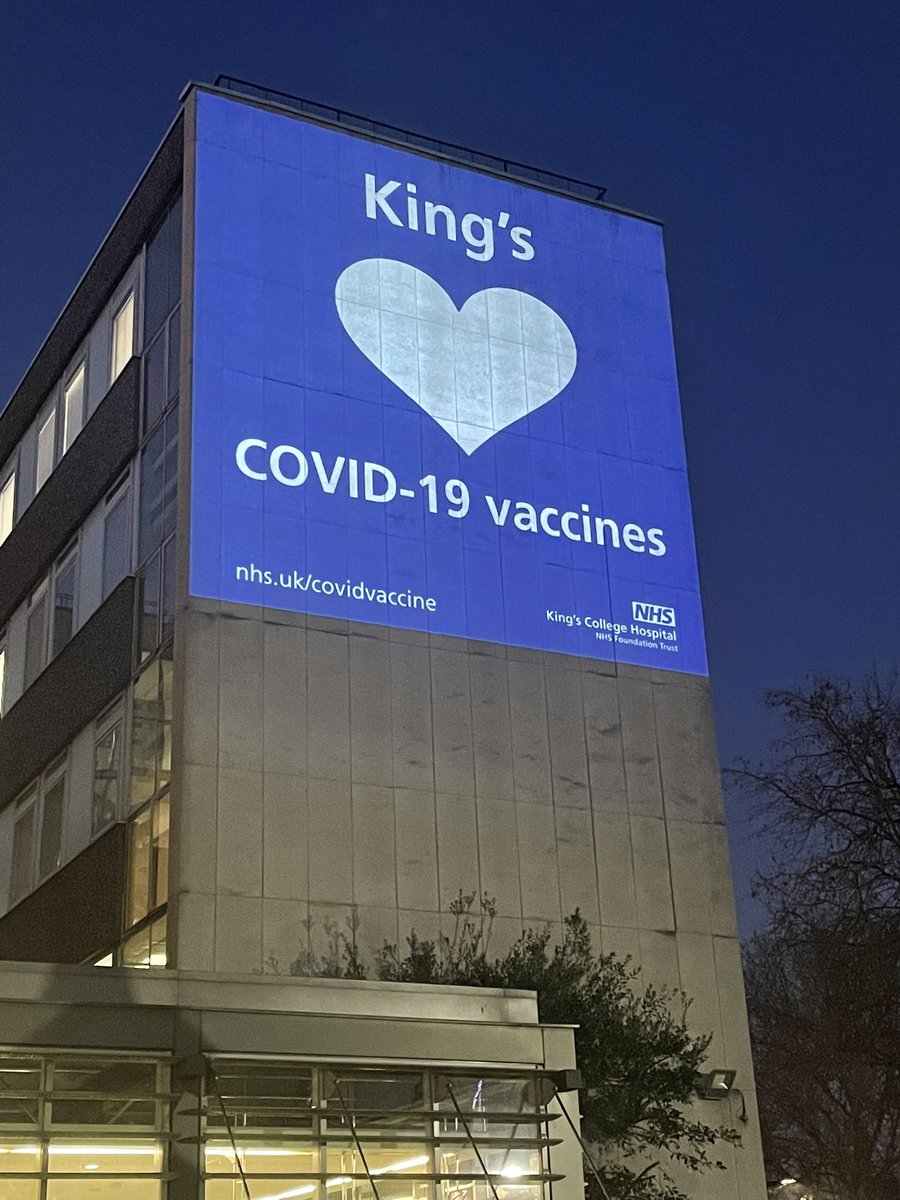
COVID sitrep: Lots of topics to choose from this week. Good news is we have probably passed the peak in new COVID-19 infections in several UK regions. This week’s map (right) is not so dark. But what will happen next is not so clear. A thread from the NHS perspective. 1/12 



All eyes have been on London as the first UK region to get hit by the omicron variant. Cases seem to have peaked both in younger and older people (light blue line=<60yrs, dark blue line=60+ yrs). But we aren’t sure whether new case rates will fall quickly or plateau out. 2/12 

Why so cautious when others seem confident cases are falling? Well, passing the peak defines the NHS response. When we know we are past the worst we stop planning extra covid capacity, re-focus on the patients we have, and plan more routine NHS work. A big shift in strategy. 3/12
The proportion of people tested who are positive for coronavirus is very high (blue line in graph). Still LOTS of people getting infected. Unlike previous major waves we haven’t had a lockdown to shut off the spread. Infection numbers may remain high for longer this time. 4/12 

NHS covid pressure is most reflected in the number of infected patients in hospital. This is now falling in London although still rising in some UK regions. Earlier predictions seem about right: hospital in-patients peaking mid-January with half the numbers as last winter. 5/12 

Lots of NHS intensive care beds are occupied by patients with covid but we are now confident this will not rise sharply like last winter. Fewer patients are developing life-threatening covid illness needing ICU care. Several reasons but the big one is definitely vaccination. 6/12 

Throughout this wave, the biggest NHS pressure is on general wards, such as respiratory wards. Emergency departments and GP surgeries also having a tough time. We expect this pressure to remain high at least until Easter. 7/12
Major topic this week was a conversation between a doctor and Sajid Javid (Health Secretary) during a visit to a London hospital. He expressed strong views about mandatory vaccination for NHS staff but supported this with flawed scientific arguments...8/12
bbc.co.uk/news/59929638
bbc.co.uk/news/59929638
…this led to a huge response from NHS staff testifying that they and their loved ones are vaccinated. For those who asked, this was not organised in any way but may possibly have been sparked by my post which on it's own was viewed 1.8 million times. 9/12
https://twitter.com/rupert_pearse/status/1480111808698630146?s=20
Vaccine hesitancy is uncommon amongst NHS staff but it does exist. The UK government estimates 1 in 25 NHS staff are not vaccinated or 125,000 people. Many don’t work in patient facing roles but it’s still a lot of people. Their cause may be misused by anti-vax campaigners. 10/12
The deadline for NHS staff to be vaccinated is 1st April (unless a genuine exemption). @aomrc view is shared by many NHS staff: we should all get vaccinated, but a mandatory policy is unhelpful. This from @Billy_Palmer_ of @NuffieldTrust. 11/12
https://twitter.com/Billy_Palmer_/status/1480972703775535105?s=20
…and finally, for the avoidance of doubt, this is what @KingsCollegeNHS thinks about the matter. Vaccination is THE single most important thing any of us can do to avoid ending up in ICU or dying from COVID. 💙 12/12 

• • •
Missing some Tweet in this thread? You can try to
force a refresh

















